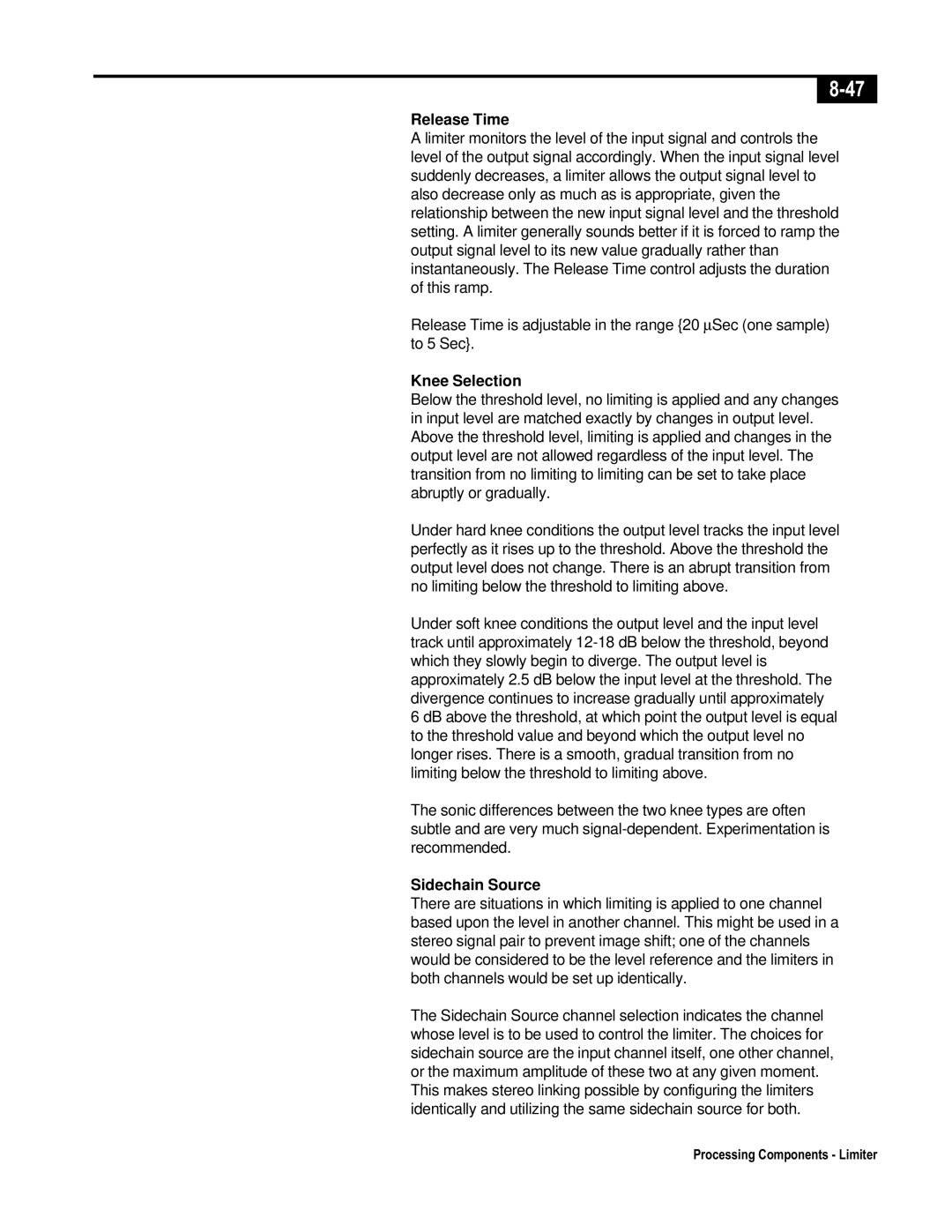Release Time
A limiter monitors the level of the input signal and controls the level of the output signal accordingly. When the input signal level suddenly decreases, a limiter allows the output signal level to also decrease only as much as is appropriate, given the relationship between the new input signal level and the threshold setting. A limiter generally sounds better if it is forced to ramp the output signal level to its new value gradually rather than instantaneously. The Release Time control adjusts the duration of this ramp.
Release Time is adjustable in the range {20 μSec (one sample) to 5 Sec}.
Knee Selection
Below the threshold level, no limiting is applied and any changes in input level are matched exactly by changes in output level. Above the threshold level, limiting is applied and changes in the output level are not allowed regardless of the input level. The transition from no limiting to limiting can be set to take place abruptly or gradually.
Under hard knee conditions the output level tracks the input level perfectly as it rises up to the threshold. Above the threshold the output level does not change. There is an abrupt transition from no limiting below the threshold to limiting above.
Under soft knee conditions the output level and the input level track until approximately
6dB above the threshold, at which point the output level is equal to the threshold value and beyond which the output level no longer rises. There is a smooth, gradual transition from no limiting below the threshold to limiting above.
The sonic differences between the two knee types are often subtle and are very much
Sidechain Source
There are situations in which limiting is applied to one channel based upon the level in another channel. This might be used in a stereo signal pair to prevent image shift; one of the channels would be considered to be the level reference and the limiters in both channels would be set up identically.
The Sidechain Source channel selection indicates the channel whose level is to be used to control the limiter. The choices for sidechain source are the input channel itself, one other channel, or the maximum amplitude of these two at any given moment. This makes stereo linking possible by configuring the limiters identically and utilizing the same sidechain source for both.
Processing Components - Limiter
